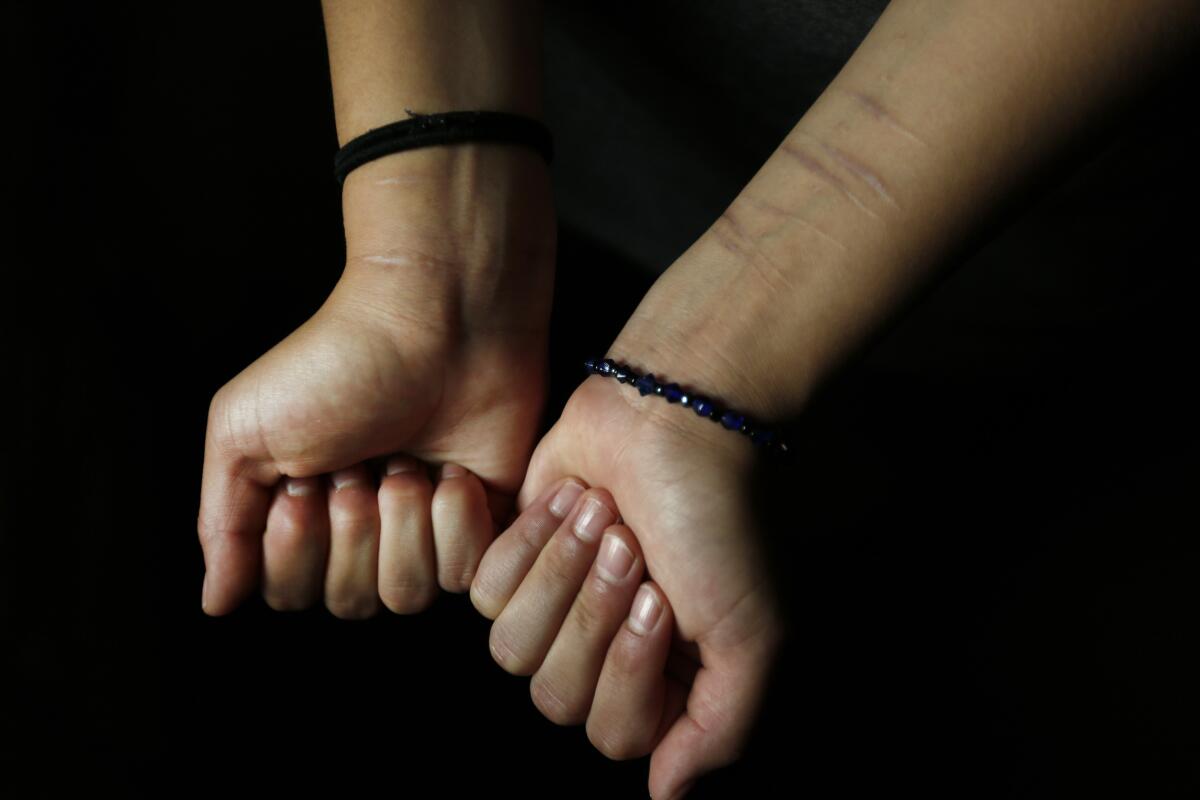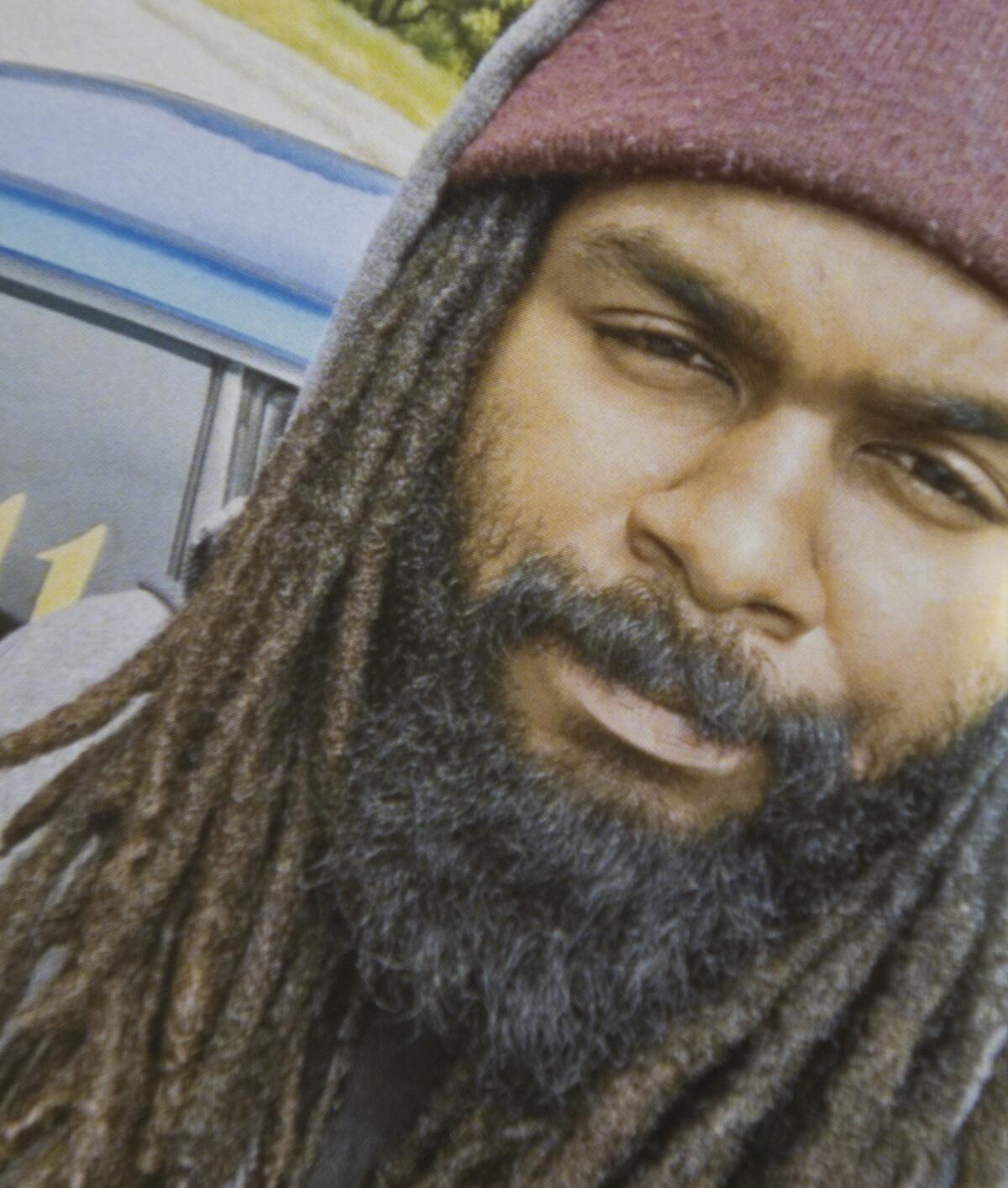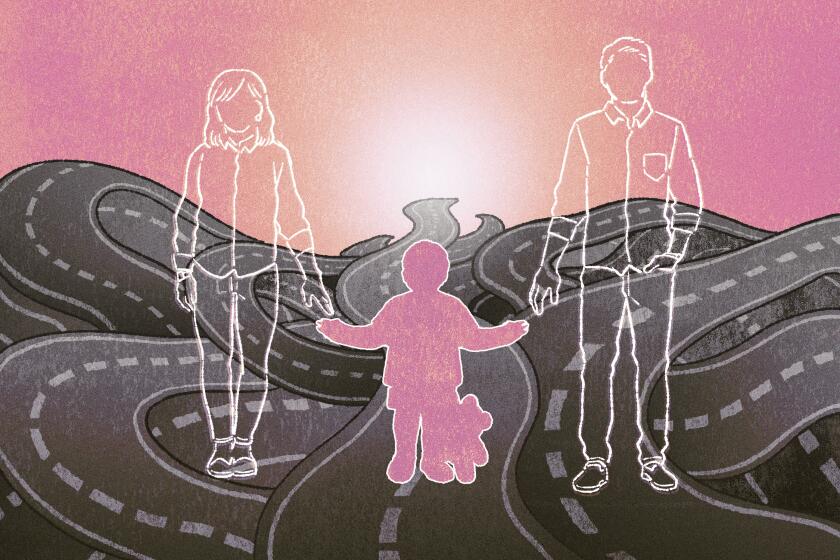How California’s big effort to help abused children left some with nowhere to go

- Share via
Over the last 18 months, Los Angeles County’s child welfare agency has placed more than 200 foster children in hotels, sometimes for months, despite internal criticism that the practice could be dangerous. Now, county officials say, two social workers have been assaulted by foster youths in separate incidents this year at hotels, including one at downtown Los Angeles’ Biltmore Hotel.
The county’s decision to house foster children in hotels underscores California’s chronic shortage of families and group homes willing or able to house youths with significant untreated trauma and histories of violence.
The worsening shortage, child welfare advocates say, can be traced in large part to a landmark law signed by then-Gov. Jerry Brown in 2015 that was supposed to improve the lives of foster children. The law — the state’s most significant child welfare reform in the last decade — curtailed the use of group homes for foster youths in favor of placing abused or neglected children with relatives or licensed foster families. Most group homes either closed or were limited to providing housing for up to six months.
The state’s count for children living in group homes has dropped from 3,655 to 1,727 since the law took effect in 2017, but the state has failed to recruit enough foster families to house the displaced youths.
Despite its effect, the law has received little public scrutiny.
What was the goal of the law?
The primary goal was “to move the system away from thinking about placing children in beds and acknowledge that there’s nothing more important for youths than being loved and nurtured and cared for in a family,” said Jennifer Rodriguez, who grew up in group homes before becoming a lawyer leading the Youth Law Center, a San Francisco public interest firm that was among the most ardent supporters of the new law.
The legislation, Assembly Bill 403, came with tens of millions of dollars to aid the transition, including the recruitment and training of additional foster families.
But that money represents just a tiny fraction of child welfare spending, which is $2.9 billion annually in Los Angeles County alone.
Two alleged assaults on Los Angeles County social workers by foster children have sparked criticism that such violence was inevitable.
Overall spending has been on the decline in recent years throughout the state, and lawmakers hoped this law would eventually allow further cuts. Children at high-level group homes were costing taxpayers about $11,000 per month for each child.
Group homes have also been the site of substandard care and scandalous abuse over the years. Two decades after Los Angeles County officials shut down MacLaren Children’s Center in El Monte, for example, former foster children are still coming forward with accounts of sexual abuse they say they suffered at the hands of staff.
Santos Amigon, now a forklift driver at Imperfect Foods, spent time in several Los Angeles County group homes around the time that the 2015 law was approved, and he was initially hopeful about its impact. Amigon recalled being segregated in special schools intended only for group home youths that he considered substandard.
“So you got about 30 or 40 boys in there that don’t want to be there. Of course, there’s fights going on,” said Amigon, who now advocates for improved services as a member of the Los Angeles chapter of the National Foster Youth Institute.

Amigon said he still cheers the curtailment of the state’s use of group homes, but he lamented that some foster children are being housed in hotels.
“That’s not a long-term solution,” he said.
How do people view the law’s effects today?
Gov. Gavin Newsom’s social services secretary, Kim Johnson, touts the law as a success. “In just a short time,” she said last year in a written statement, “this effort has resulted in more children being placed with their own relatives or in other home-based settings. In the end, this helps youths experience better outcomes.”
Johnson’s staff later clarified that the number of children with their own relatives or in other home-based settings has actually gone down. The only thing that has risen is the percentage of licensed foster care beds that are provided by foster parents instead of group homes.
Rodriguez, the former foster youth who became a leading advocate for the law, said state officials have failed to the extent that children have left group homes without finding a stable foster family home.
The state’s plan depended heavily on finding more foster parents who, with the support of improved mental health care and other services provided by the county, could better rehabilitate abused and neglected youths.
You have options when applying to become a foster parent in Los Angeles County. Here’s what you should know and some questions you should ask yourself.
Rodriguez said the state needs to recruit more foster parents by paying them more money and giving them better support from clinicians to help the children they take in.
Another key architect of the legislation, Frank Mecca, said the state should have anticipated that more children would have to remain in group homes.
Mecca, who retired in December 2020 as executive director of the powerful County Welfare Directors Assn. of California, noted that his former agency recently called on lawmakers to go back to the drawing board to fund and license a limited number of new specialized facilities for youths with “complex needs.”
“The alternative for those youths is juvenile hall or homelessness,” Mecca said. “It’s just not humane.”
Newsom and other state leaders have so far declined to comment.
What is happening in group homes since the law took effect?
By many accounts, the children in today’s group homes are experiencing care that is worse than the group home experience reformers meant to eradicate.
A Los Angeles County task force convened experts and many youths living in the group homes to examine the problem. The resulting report, published two years ago, concluded that the 2015 law has resulted in a “higher number of youth with significant challenges being placed together in settings that lack the resources to effectively meet their needs.”
This places “far higher pressures than before” on the child welfare system, largely due to “shorter time-frames in which to treat” children, the report said.
Before the new law, Los Angeles County youths in group homes were commonly housed in communities of six to eight but now typically share a facility with 20 others at a time for up to six months, said Leslie Heimov, director of the court-appointed law firm representing the county’s foster children.
The needs of each youth are often more complex. Many are involved with the juvenile delinquency system, sex trafficked, developmentally disabled or suffering from psychosis. The children in those homes, Heimov said, describe a life that can look like incarceration.
“We weren’t allowed to leave,” said Sabrina Abong, who lived in a group home in San Jose shortly before she aged out of the foster care system in 2018. “We weren’t allowed to go anywhere without being supervised. We were always being watched. We would always be investigated. You would have four hours that you wouldn’t come out of your room. And that is not a home for youth. It’s not.
“There were people fighting. People running away, people doing drugs,” said Abong, who now lives in Merced and works at a Tesla factory.
Police often bring youths back to group homes after they run away or get into trouble off campus.

Across the state in 2017, police returned youths to institutional foster care settings 20,000 times, or five times per young person housed in institutions. In 2020, the most recent year figures are available, police returned children to such facilities 23,000 times, or eight times per youth.
In 2017, the number of reported assaults at the short-term group homes in Los Angeles County was 16. In 2020, it was 490.
On Jan. 2, 2021, a 25-year-old counselor, David McKnight-Hillman, was assaulted while trying to break up a fight at another short-term residential program run by Wayfinder Family Services. He later died.
What’s happening nationally?
In 2018, former President Trump signed landmark child welfare legislation that used California as a model. The U.S. law, known as the Family First Prevention Services Act, ended federal funding for many residential treatment facilities, but it did even less than California’s push to fund the recruitment of new foster parents.
Stories now abound of desperate shortages of placements in more than a dozen states that leave children living in conference rooms, hotels or on the streets.
Last year, for instance, the Illinois Answers Project reported that Illinois’ state child welfare agency had more than 2,000 cases since 2018 of foster children being improperly held in inappropriate settings, including offices, shelters and psychiatric hospitals. The agency’s director was held in contempt of court 12 times last year for failing to provide an appropriate placement for foster children.
More to Read
About this story
Sign up for Essential California
The most important California stories and recommendations in your inbox every morning.
You may occasionally receive promotional content from the Los Angeles Times.















